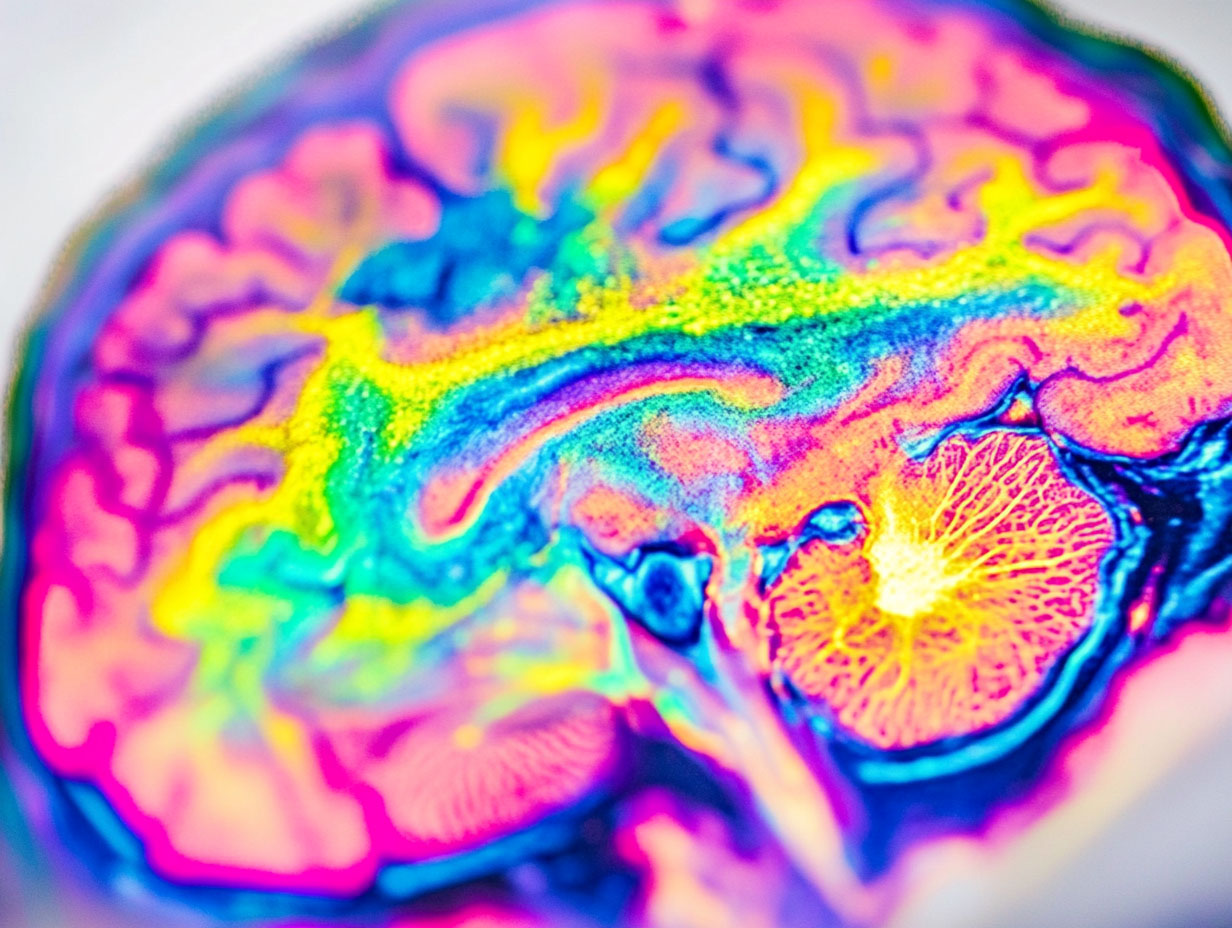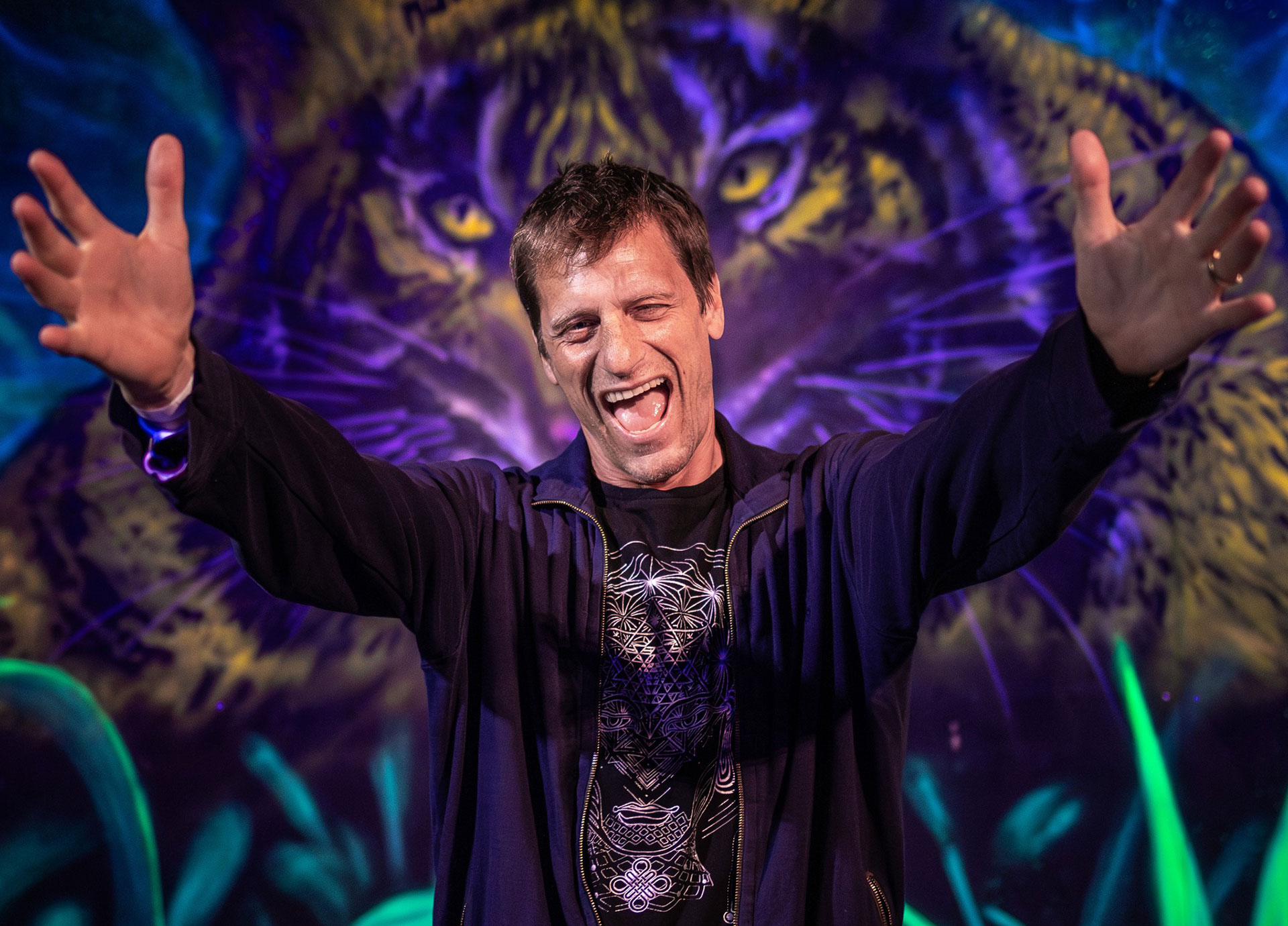
- Home
- News
- psychedelics
- A Study Using Advanced Brain Imaging Hint How DMT Changes Reality Perception
A Study Using Advanced Brain Imaging Hint How DMT Changes Reality Perception
Researchers at Imperial College London conducted a study that utilized brain imaging data from 20 healthy volunteers to observe the effects of DMT (dimethyltryptamine), a potent psychedelic compound, on brain function. The study revealed that the DMT experience led to heightened connectivity between various areas and systems in the brain, resulting in increased communication. Notably, the changes in brain activity were most prominent in areas associated with “higher level” functions, such as imagination.
DMT Is Potent
The body contains trace amounts of the powerful hallucinogenic DMT, which also exists naturally in some plants and animals. It serves as the main hallucinogenic ingredient in ayahuasca, a psychedelic beverage prepared from vines and leaves that are utilized in customary ceremonies throughout South and Central America. The study, which was released in the PNAS journal, is significant since it is the first to thoroughly track alterations in brain activity before, during, and following a DMT encounter.
According to Dr. Chris Timmerman, the first author of the study and a member of the Centre for Psychedelic Research at Imperial College London, this research is significant because it presents the most advanced human neuroimaging perspective of the psychedelic state thus far. The statement is notable for its enthusiasm regarding the study’s findings.
“One increasingly popular view is that much of brain function is concerned with modeling or predicting its environment. Humans have unusually big brains and model an unusually large amount of the world. For example, like with optical illusions, when we’re looking at something, some of what we’re seeing is our brain filling in the blanks based on what we already know. What we have seen with DMT is that activity in highly evolved areas and systems of the brain that encode especially high-level models becomes highly dysregulated under the drug, and this relates to the intense drug ‘trip’.”
DMT Is Different
DMT’s effect on the brain is transient and only lasts a few minutes, as opposed to other well-known classic psychedelics like LSD or psilocybin, which can have a lasting effect for several hours. As well as an immersive altered state of consciousness that frequently includes the sensation of “visiting” other realities or dimensions, DMT is known to produce vivid and peculiar images. Near-death experiences have been compared to the effects of DMT. Nevertheless, it is not yet known how the drug alters brain activity to produce these effects.
In the study at hand, 20 healthy volunteers received an intravenously administered high dose of DMT (20 mg) for testing. Functional magnetic resonance imaging (fMRI) and electroencephalography (EEG) were used by the researchers at Imperial’s Centre for Psychedelic Research to obtain precise images of the volunteers’ brains. The scientists sought to comprehend how DMT alters brain function by monitoring variations in brain activity before, during, and after the experience. The entire psychedelic experience lasted roughly 20 minutes, and volunteers periodically rated the intensity of their sensation on a 1–10 scale.
The volunteers’ brain activity changed both within and between regions of the brain during the functional magnetic resonance imaging (fMRI) scans while they were under the influence of DMT. The alterations included increased “global functional connectivity,” increased “network breakdown and desegregation,” and improved connection throughout the brain, with more communication between various areas and systems. These alterations resemble those seen in earlier studies with other psychedelics. The changes in activity were especially noticeable in the parts of the brain connected to “higher level,” uniquely human activities, like creativity.
Prof Robin Carhart-Harris, founder of the Centre for Psychedelic Research at Imperial College London, and senior author on the paper (now working at the University of California, San Francisco), commented: “Motivated by, and building on our previous research with psychedelics, the present work combined two complementary methods for imaging the brain imaging. fMRI allowed us to see the whole of the brain, including its deepest structures, and EEG helped us view the brain’s fine-grained rhythmic activity.
“Our results revealed that when a volunteer was on DMT there was a marked dysregulation of some of the brain rhythms that would ordinarily be dominant. The brain switched its mode of functioning to something altogether more anarchic. It will be fascinating to follow up on these insights in the years to come. Psychedelics are proving to be extremely powerful scientific tools for furthering our understanding of how brain activity relates to conscious experience.“
The Imperial College London team is currently investigating methods to extend the peak of the psychedelic experience by administering continuous DMT infusion. Additionally, some members of the team are serving as advisors for a commercial trial that aims to evaluate the efficacy of DMT for treating individuals with depression. ![]()
Source: https://www.pnas.org/doi/full/10.1073/pnas.2218949120
Subscribe To Our Magazine!
Get every issue of Psychedelic Magazine delivered straight to your inbox every month - for free! We do not spam!
You have subscribed successfully!
Some error occured
Please fill all the required * fields.








